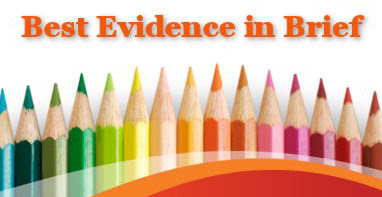Research studies have shown that American children have difficulty with the concept of equivalency more than their international peers. Less than 20% of American 7-11 year olds are able to solve a math problem involving equations on either side of an equal sign (example: 3+8+4 = 3 + _) because they do not recognize that the problem is asking them about a concept (equality) rather than a calculation. Improving Children’s Understanding of Equivalence (ICUE) is a supplementary math intervention that targets this problem using four strategies: (1) introducing the equal sign before arithmetic, (2) nontraditional arithmetic practice, (3) concreteness fading exercises, and (4) comparison and explanation. It is delivered in 32 lessons over 16 weeks, twice a week for 15-20 minutes, in addition to regular math lessons.
In order to build its evidence base, ICUE conducted a cluster randomized trial in public second grade classrooms in California. 132 second grade teachers in 53 schools in 7 districts were randomly assigned to use either ICUE (n=69E) or non-traditional arithmetic practice alone (n=63C) in addition to their business as usual instruction. Non-traditional practice consisted of presenting problems in non-traditional formats (ex: __= 9+8), using “is the same as” or other phrases instead of the equal sign, and organizing problems into sets based on equivalent values (ex: 3+4= __; 5+2=__). Students were tested using both researcher-made and independent measures. Because research shows that researcher-made measures inflate effect sizes, only the results for independent measures are reported in this summary. Using performance tasks from the Mathematics Assessment Resource Service (MARS), results from 2259 students (n=1131E, 1128C) showed an advantage for the ICUE students (g=+0.20). Researchers also looked at the effects of equivalency training on students’ computational skills. No statistically significant differences were found between the two groups on the independent ITBS, meaning that learning about equivalency did not hinder children’s learning addition/subtraction.

